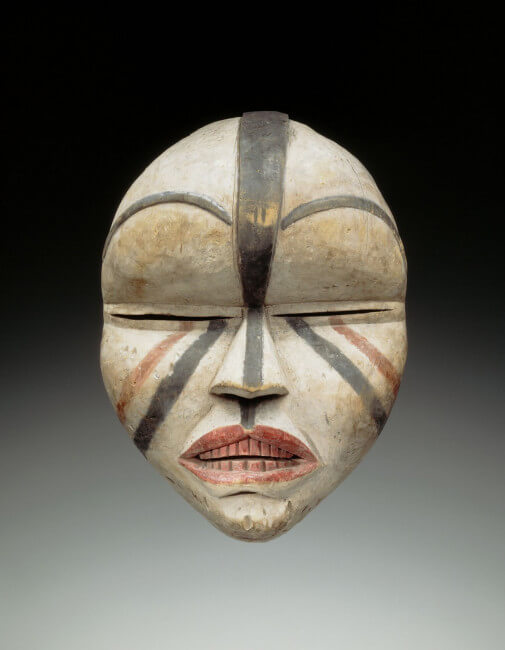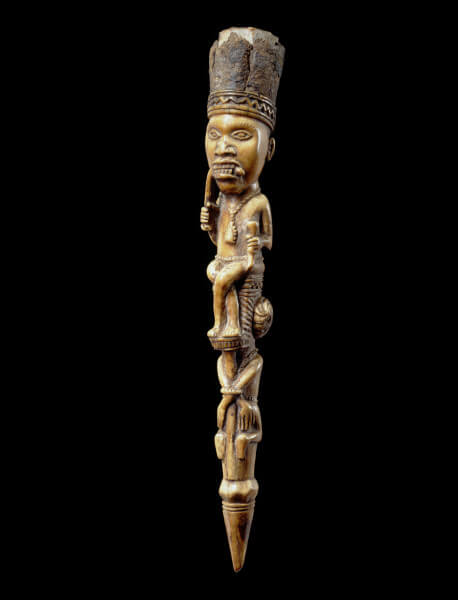The site of festivals, concerts, filming, weddings, and more, Congo Square inside Louis Armstrong Park is one of the most iconic spots in the city. Historically, it’s always been a destination for cultural practices – but the Square’s beginnings are deeply rooted in local African American history.
Slavery existed in New Orleans much like it did in the rest of the Southern United States, and in New Orleans slaves were given Sunday as a day of rest where they could congregate and socialize. Slaves traditionally gathered in Congo Square on Sundays from the early 1700s on, using the location as a place to share their traditions, sing, sell homemade wares, and celebrate life despite unimaginable hardships.
With Congo Square as a testament to the city’s rich African heritage, the New Orleans Museum of Art is presenting Kongo Across the Waters, a new exhibit running from Feb. 27 through May 25. Learn a bit more about this captivating exhibit below – we hope to see you there!

Originally on display at the Royal Museum for Central Africa in Belgium, this mask, circa 1900, showcases the work of the Woyo peoples, a group from the Lower Congo. (Photo courtesy Kongo Across the Waters)
THE EXHIBIT
Kongo Across the Waters delves into connections (both artistic and cultural) between the peoples of the African Kongo and African Americans in the United States.
Originally a joint exhibit between The Harn Museum of Art at the University of Florida and the Royal Museum for Central Africa in Belgium, the exhibit now comes to New Orleans – an appropriate fit, says Susan M. Taylor, the director of NOMA.
“Art and music of the Kongo has strongly influenced the culture of New Orleans,” she says, “evidenced even today by the myriad of cultural activities that take place in our own Congo Square.”
The exhibit uses chronological organization to show early African artwork and the impact of European travels to the Kongo. Europeans brought with them materials like beads that Africans could use in artwork, for example, but they also implemented slave trade. This, in turn, brought Africans to the Southeastern United States.
After visitors experience early African art and cultural works, they are transported “across the waters” from the Kongo to America to view once-hidden items buried in slave cabins or colonial mansions, handmade wares like ceramics and baskets, and other items that demonstrate the close cultural connection between African art and the American South. 19th- and 20th-century African art comprises the next portion of the exhibit, followed by contemporary art with strong African influences.

This intricate ivory scepter, created during the 1800s, exhibits the meticulous artistry of people living in Lower Congo. (Photo courtesy Kongo Across the Waters)
SPECIAL GUESTS
On Friday, Feb. 27, NOMA will host several opening-day guest speakers and events. Two members from the Royal Museum of Central Africa will speak at 6 p.m. with live music performances by Bamboula 2000. Throughout the exhibit’s tenure at NOMA, guests can enjoy scholarly lectures, symposiums, and music, culminating in a final lecture on May 22.
VISITOR INFORMATION
The museum is open Tuesday through Thursday from 10 a.m. until 6 p.m.; Friday from 10 a.m. until 9 p.m.; and Saturday and Sunday from 11 a.m. until 5 p.m. Tickets are $10 for adults with discounted rates of $8 for seniors and $6 for children ages 7 to 17 (children ages 6 and younger receive free admission). Wednesdays are free admission for Louisiana residents.
With cultural and artistic elements closely tied to New Orleans, it’s no wonder Kongo Across the Waters chose NOMA as its latest venue (one of just three stops around the country). As Taylor reminds us, “this exhibit promises to resonate with the history and traditions of New Orleans.”